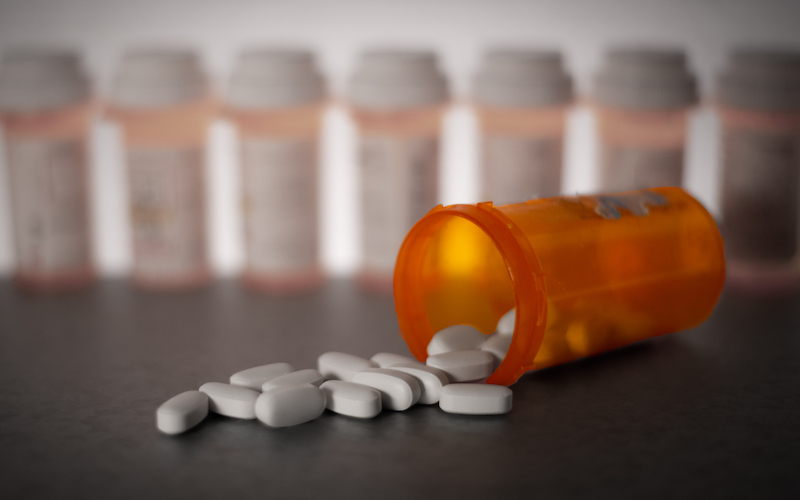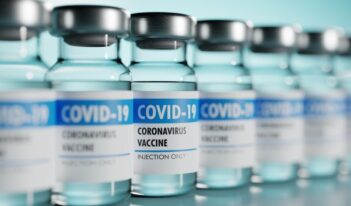
Amid the coronavirus, the federal government eases restrictions on prescribing controlled substances by telehealth.
The United States simultaneously faces two unprecedented public health crises: the opioid epidemic and the coronavirus pandemic.
Since U.S. Department of Health and Human Services Secretary Alex Azar’s public health emergency declaration in response to the coronavirus, the federal government has urged the nation to practice social distancing to curb the infection’s spread.
But patients still need to access care—including the over 350,000 individuals who rely on daily treatment programs for opioid use disorder (OUD) to sustain their recovery. During this period of social distancing, some addiction treatment providers are turning to telemedicine, the use of electronic systems to provide care to patients in remote locations.
To ease providers’ ability to offer telehealth services to patients with opioid addiction, the U.S. Drug Enforcement Administration (DEA) recently issued guidance that allows practitioners to prescribe certain controlled substances remotely to patients in a treatment program for self-administration.
Controlled substances are drugs for which the DEA regulates production, distribution, and use. Health care providers must register with the DEA to prescribe these drugs. Furthermore, DEA-licensed practitioners must conduct an in-person medical evaluation before prescribing controlled substances to a patient.
The law, however, authorizes the Health and Human Services Secretary and the DEA Acting Administrator to make an exception to the in-person evaluation requirement.
During a declared public health emergency, providers can prescribe controlled substances for at-home use after telehealth consultations with patients. Although the DEA’s guidance obviates the need for practitioners to conduct in-person evaluations before prescribing these medications, providers must still meet three main conditions.
First, all DEA-registered providers acting in the usual course of their professional practice can only prescribe drugs used for a legitimate medical purpose.
Second, all telehealth treatment, evaluations, and consultations must be conducted live, using a two-way electronic communication tool with video and audio features.
Finally, practitioners must comply with applicable state and federal controlled substances laws.
In addition to these conditions, providers must be registered with the DEA in the states where they and their patients are physically located during the telehealth communication.
By permitting electronic prescribing during public health emergencies, the federal government aims to help patients currently in opioid treatment programs to continue receiving addiction services, counseling, and medication.
Opioid treatment programs often use medication-assisted treatment (MAT) models to support patients with opioid addiction. Centered on a “whole-patient” approach to treatment, MAT program providers prescribe U.S. Food and Drug Administration (FDA) approved controlled substances, combined with behavioral therapy and counseling services, to treat substance use disorder and promote recovery. Providers administer these FDA approved medications in phases at MAT clinics and monitor patients throughout their enrollment in the treatment program.
Unfortunately, during the current coronavirus pandemic, this in-person treatment is no longer possible for patients enrolled at clinics that have closed. Continued MAT services, however, are critical to supporting patients’ treatment and mitigating their potential for relapse. Since addiction is a chronic condition, having access to MAT prescriptions and psychosocial support through telehealth is essential throughout the coronavirus crisis.
Still, some addiction specialists worry that allowing patients to self-administer controlled substances could have adverse effects. Allegra Schorr of the Coalition of MAT Providers and Advocates has reportedly stated that providers “simply cannot give 30 days of methadone to a patient who is not stable” because vulnerable patients would likely abuse or overdose on the controlled substance—a risk with immediate, life-threatening consequences potentially greater than that of the coronavirus for these patients.
Recognizing the danger in self-administration of controlled substances for unstable patients, the federal Substance Abuse and Mental Health Services Administration (SAMHSA) is permitting states with declared states of emergency to submit a request to provide a 28-day supply of drugs for patients whose provider determines are stable enough to take the medications at home. For those patients who are clinically identified as “less stable,” SAMHSA caps take-home doses to a 14-day supply.
In response to the federal guidance, some states are beginning to implement telehealth services for addiction treatment.
The Ohio Department of Mental Health and Addiction Services, for example, recently issued guidance to support treatment programs in the state during the pandemic. The state government’s guidance requires that patients with take-home dosing for continued treatment also have on hand naloxone—the opioid overdose reversal drug—in case of an emergency. For patients who are unstable, however, Ohio is permitting these individuals to ignore the shelter-in-place directives for the purpose of continuing to visit clinics for daily, monitored doses.
As states heighten their quarantine measures, treatment clinics face several challenges in implementing telehealth to prescribe medication and offer services that reduce the risk of patient setbacks.
For example, in MAT programs, patients undergo a regular urinalysis test for illicit drugs. Without in-person visits to clinics, this vital component to substance abuse treatment may be compromised. The lack of accountability through consistent testing, along with periods of social isolation, may exacerbate the opioid epidemic by increasing relapses and overdoses, some health care providers fear.
Other providers argue that the DEA’s relaxed restrictions on telemedicine do not go far enough to ease burdens on MAT programs. Instead, they advocate that the DEA further loosen its licensing requirements and caps on the number of patients to whom clinicians can electronically prescribe controlled substances. The current limits, they explain, do not account for how social isolation and other challenges of the pandemic will impact the number of patients in need of services through telehealth.
Despite these different responses to the DEA’s guidance, opioid treatment providers agree that daily treatment and a consistent support network could be life-saving during the coronavirus pandemic—a period of loneliness and anxiety for many battling opioid addiction.



